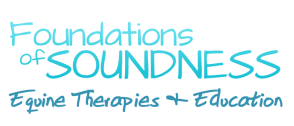Differentiation between gymnastic and cybernetic muscles
“The gymnastic muscles are the most important and strongest skeletal muscles, responsible for rapidity and power of impulsion. Their innervation is relatively light, with one motorneuron servicing approximately 1000 myofibrils.
The cybernetic muscles, by contrast, are richly innervated (with one motorneuron servicing 20 to 30 myofibrils), which makes their movement much more precise. Examples include the muscles in the upper lip and the orbicular muscles in the eyelids, with one neuron for each two muscle fibres.
These sensitive muscles are also located deep in the body, in the regions next to articular joints (notably around the spinal column), and are in contact with the capsular and ligamentary membranes. Proprioceptors transmit information on the muscles’ state of tension to the brain via reflex paths.
Their proximity to the joints, the wealth of postural information they contain and the variety of possible responses which they are capable of are the features which distinguish them from the gymnastic muscles.
It is the cybernetic muscles which respond to the rider’s subtler commands.
These proprioceptive muscles have a particular role to play in the development of sensitivity. For them to be effective the horse must be attuned:
- Psychologically: if the horse is stressed, the gymnastic muscles can take over to the extent that proprioceptive awareness is obscured, locking the muscles and joints.
- Physiologically: if illness or pain or some mechanical restrictions hampers soundness of movement, the horse’s perceptions and responses, and particularly its proprioception, can be adversely affected.
Conflict between the two kinds of muscle occurs in certain situations, such as when a young horse is tired or being verbally harassed and handled brusquely. As a rule, if there is a well-balanced relationship between horse and rider, gymnastic and cybernetic muscles complement each other. If psychological and physiological communication is poor – and the aware rider is as much a psychologist as a physiotherapist – the work will suffer accordingly, and the horse’s future successful performance will be hampered.”
~ Denoix, J. M., & Pailloux, J. P. (2001). Physical therapy and massage for the horse (No. Ed. 2). Manson Publishing Ltd.
Disabled and doubly neurodivergent human, former equine anatomist and bodyworker (no longer practicing due to Ehlers Danlos Syndrome complications), experienced equine advocate and educator, and budding disability advocate turning my sights on Australian Government policy and practice while elevating lived experience in research for horses and humans alike.
This blog is currently inactive but I occasionally check in on Facebook. Please check out the articles I keep it alive for and take something home to your horse ❤️
